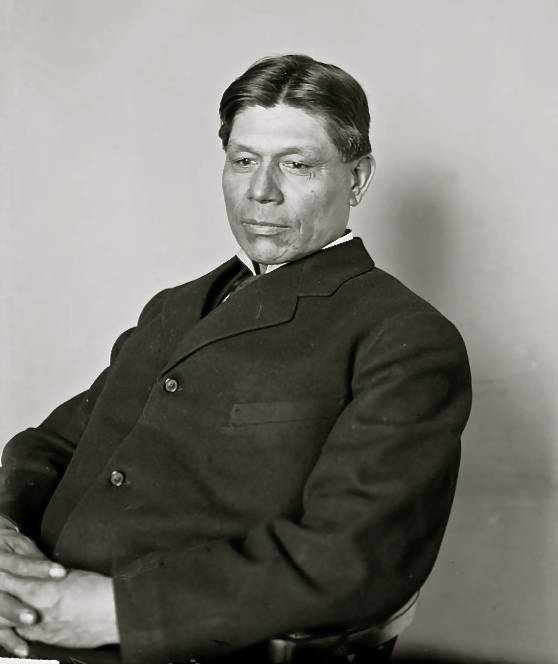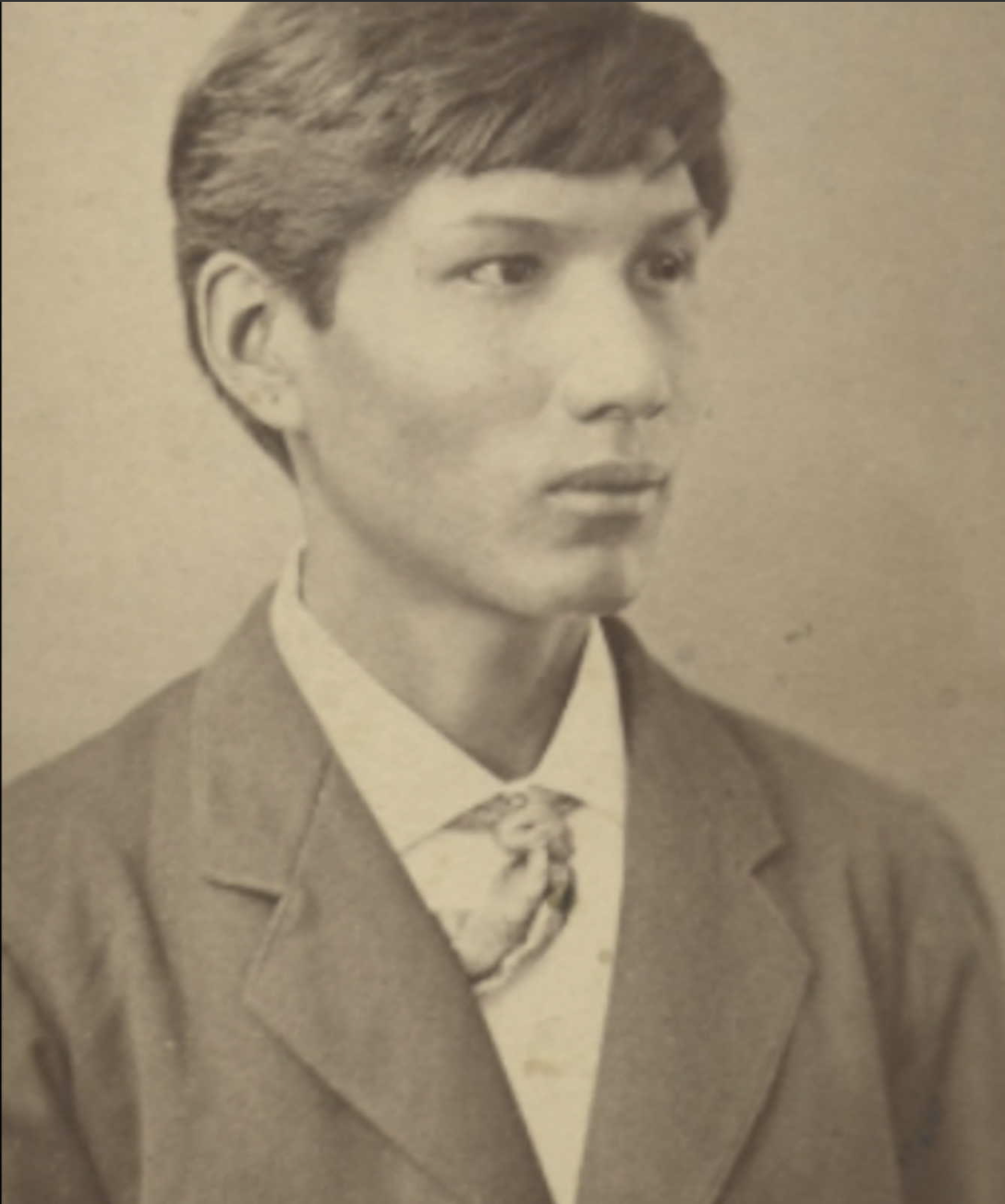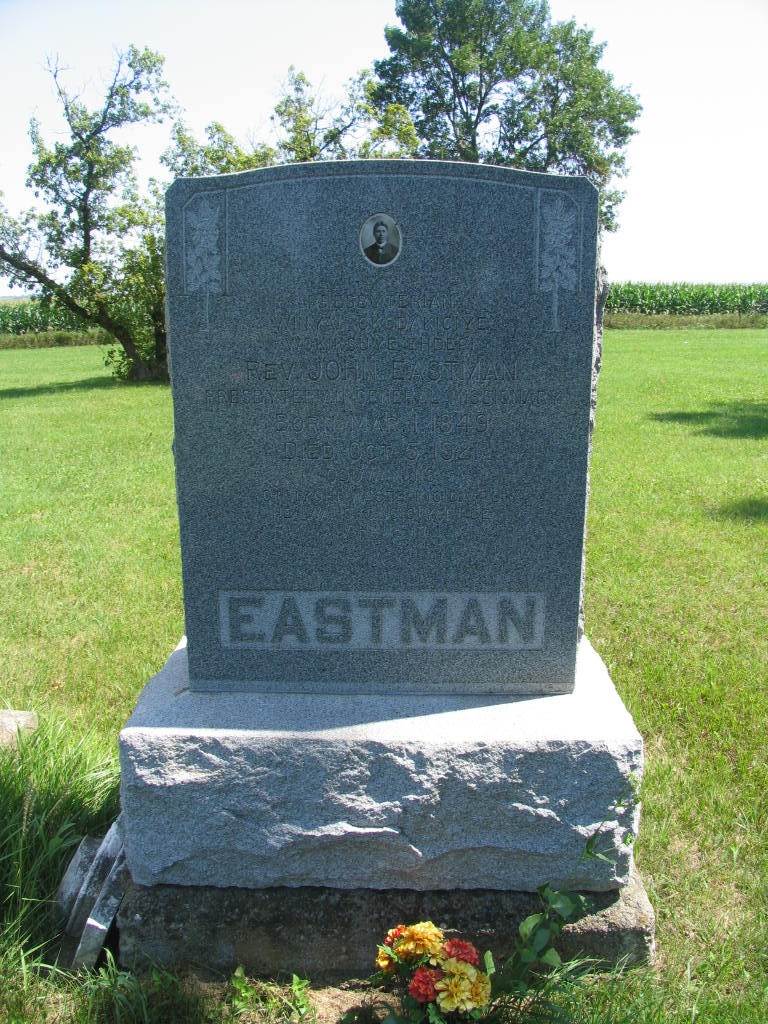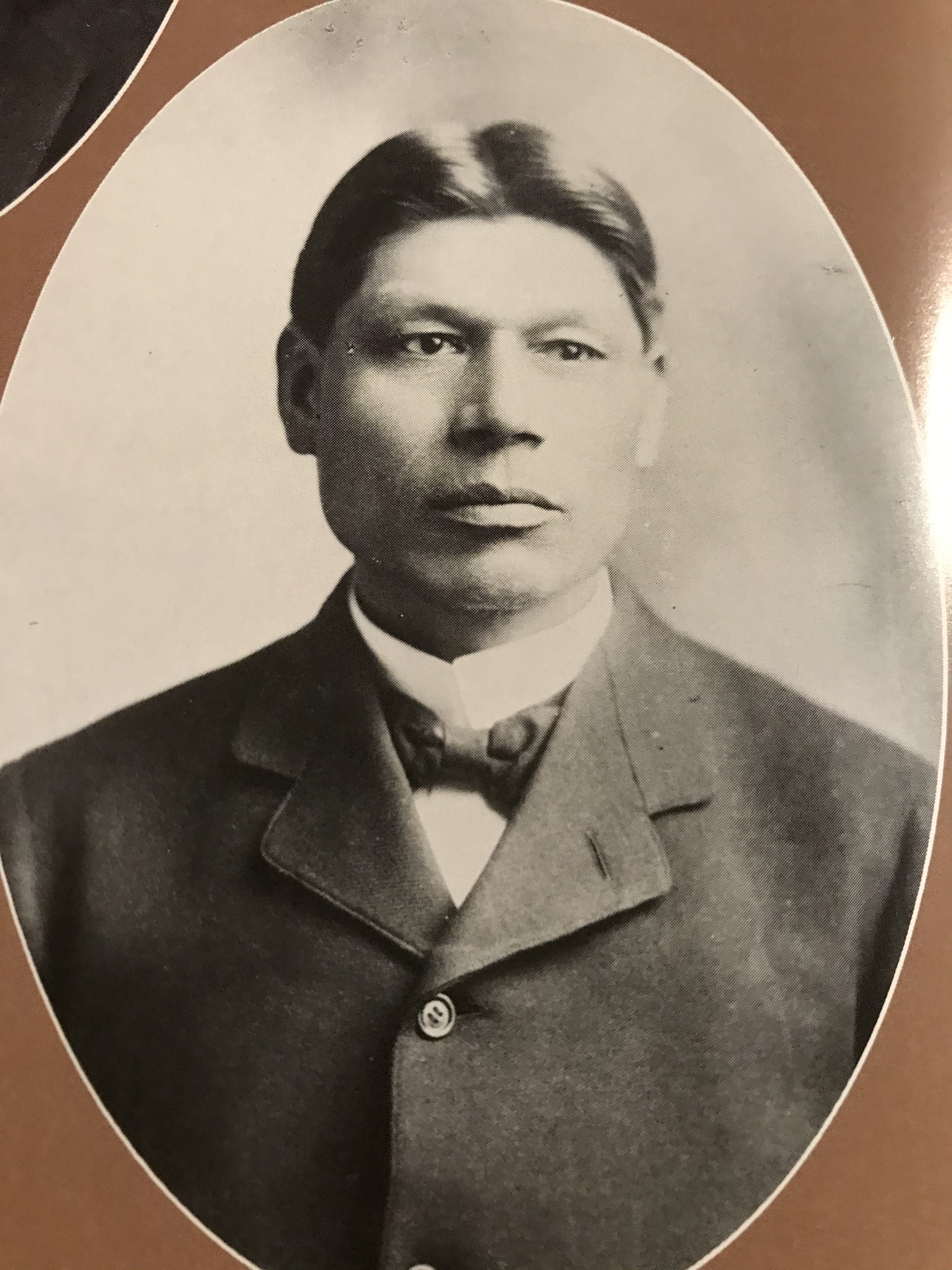In 1862, Jacob Eastman and his family were living at the Lower Sioux Agency near Redwood Falls, Minn. Besides his 5 children, his family included his mother and his youngest brother. John was a young teen of 13 years of age. His youngest brother Ohíyesa (Charles Alexander Eastman) was only 4 years old. The US-Dakota War broke out on Aug. 18, 1862, when some hostile Dakota Indians attacked the Lower Sioux Agency. Most Dakota tribe members opposed the war and did not support it. Jacob did not participate in the war and fled with his family and many other "friendly" Indians to British Columbia in Canada. During the winter of 1863-1864, Jacob and his two oldest sons were among a group of Dakota who were betrayed by a half breed at Winnipeg who reported them to US authorities. Charles was living with his uncle in another part of the country at that time, so he was not with them. He was separated from them for 10 years, believing they had been killed by the whites.
Even though his father was one of the many Dakota men who did not participate in the war, he was captured by the US military, tried, and sentenced to death by hanging. President Lincoln had his staff review all the cases of the 303 Dakota men who were sentenced to death. Lincoln then pardoned or commuted the death sentences to imprisonment for all but 39. Jacob's sentence was commuted to imprisonment. He was imprisoned at the Davenport Prison for 3 years, where he came into contact with missionaries of the Church of England, including Rev. Stephen Riggs and his wife Mary, and Dr. Thomas Williamson. During this time, John was baptized in the prison.
When he was 21 years of age, in December 1870, John walked 175 miles from Flandreau, SD to Santee, NE to attend what would later be called the Santee Normal Training School. This school was under the administration of Rev Alfred L. Riggs. A year later, under the sponsorship of Stephen R. Riggs, he attended the Beloit College Preparatory School. He joined the church on Jan. 8, 1871.
In 1873, his father returned from prison as a Christian and changed the family name to Eastman and his own name to Jacob. That same year, John married his first wife, Viola Frazier. Tragically, she died of smallpox not long after their marriage. The following year, John married Mary Jane Fairbault. On Sept. 10, 1875 he was licensed to preach by the Dakota Presbytery and one year later on Sep. 16, 1876, He was ordained as pastor of the Presbyterian Indian Church (now First Presbyterian Church) in Flandreau. The following year, in 1877, John and his father were reunited with his youngest brother Charles in South Dakota. He had not seen his brother since the US-Dakota War had broken out 15 years earlier.
John served as pastor of the First Presbyterian Church for 30 years. He was instrumental in getting the Flandreau Indian School located in Flandreau. He was a gifted speaker and often went to Washington DC on behalf of the Flandreau Indians. In 1906, he was called to serve the Goodwill Presbyterian Church, so he moved to Sisseton and became its pastor. In 1915, he became general missionary for Presbyterian Churches in South Dakota. He later served in four states as a missionary to the Indians.
After his death, his body was returned to the Flandreau First Indian Church for one night while the congregation sat at vigil. The following day, he was buried at the Presbyterian Indian Cemetery.
(c) Copyright 2009 Cindy Coffin
In 1862, Jacob Eastman and his family were living at the Lower Sioux Agency near Redwood Falls, Minn. Besides his 5 children, his family included his mother and his youngest brother. John was a young teen of 13 years of age. His youngest brother Ohíyesa (Charles Alexander Eastman) was only 4 years old. The US-Dakota War broke out on Aug. 18, 1862, when some hostile Dakota Indians attacked the Lower Sioux Agency. Most Dakota tribe members opposed the war and did not support it. Jacob did not participate in the war and fled with his family and many other "friendly" Indians to British Columbia in Canada. During the winter of 1863-1864, Jacob and his two oldest sons were among a group of Dakota who were betrayed by a half breed at Winnipeg who reported them to US authorities. Charles was living with his uncle in another part of the country at that time, so he was not with them. He was separated from them for 10 years, believing they had been killed by the whites.
Even though his father was one of the many Dakota men who did not participate in the war, he was captured by the US military, tried, and sentenced to death by hanging. President Lincoln had his staff review all the cases of the 303 Dakota men who were sentenced to death. Lincoln then pardoned or commuted the death sentences to imprisonment for all but 39. Jacob's sentence was commuted to imprisonment. He was imprisoned at the Davenport Prison for 3 years, where he came into contact with missionaries of the Church of England, including Rev. Stephen Riggs and his wife Mary, and Dr. Thomas Williamson. During this time, John was baptized in the prison.
When he was 21 years of age, in December 1870, John walked 175 miles from Flandreau, SD to Santee, NE to attend what would later be called the Santee Normal Training School. This school was under the administration of Rev Alfred L. Riggs. A year later, under the sponsorship of Stephen R. Riggs, he attended the Beloit College Preparatory School. He joined the church on Jan. 8, 1871.
In 1873, his father returned from prison as a Christian and changed the family name to Eastman and his own name to Jacob. That same year, John married his first wife, Viola Frazier. Tragically, she died of smallpox not long after their marriage. The following year, John married Mary Jane Fairbault. On Sept. 10, 1875 he was licensed to preach by the Dakota Presbytery and one year later on Sep. 16, 1876, He was ordained as pastor of the Presbyterian Indian Church (now First Presbyterian Church) in Flandreau. The following year, in 1877, John and his father were reunited with his youngest brother Charles in South Dakota. He had not seen his brother since the US-Dakota War had broken out 15 years earlier.
John served as pastor of the First Presbyterian Church for 30 years. He was instrumental in getting the Flandreau Indian School located in Flandreau. He was a gifted speaker and often went to Washington DC on behalf of the Flandreau Indians. In 1906, he was called to serve the Goodwill Presbyterian Church, so he moved to Sisseton and became its pastor. In 1915, he became general missionary for Presbyterian Churches in South Dakota. He later served in four states as a missionary to the Indians.
After his death, his body was returned to the Flandreau First Indian Church for one night while the congregation sat at vigil. The following day, he was buried at the Presbyterian Indian Cemetery.
(c) Copyright 2009 Cindy Coffin
Inscription
PRESBYTERIAN GENERAL MISSIONARY
Family Members
Sponsored by Ancestry
Advertisement
Records on Ancestry
Advertisement























